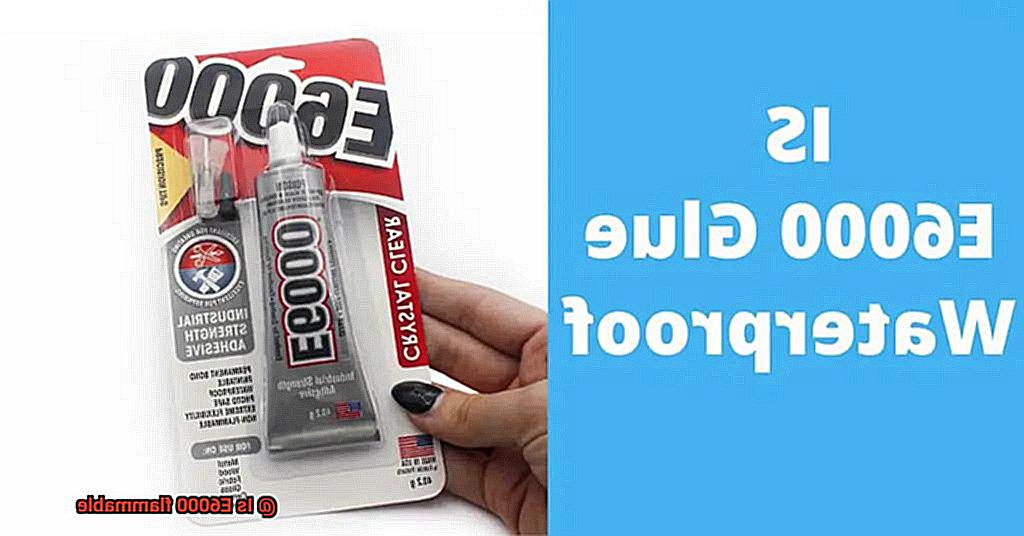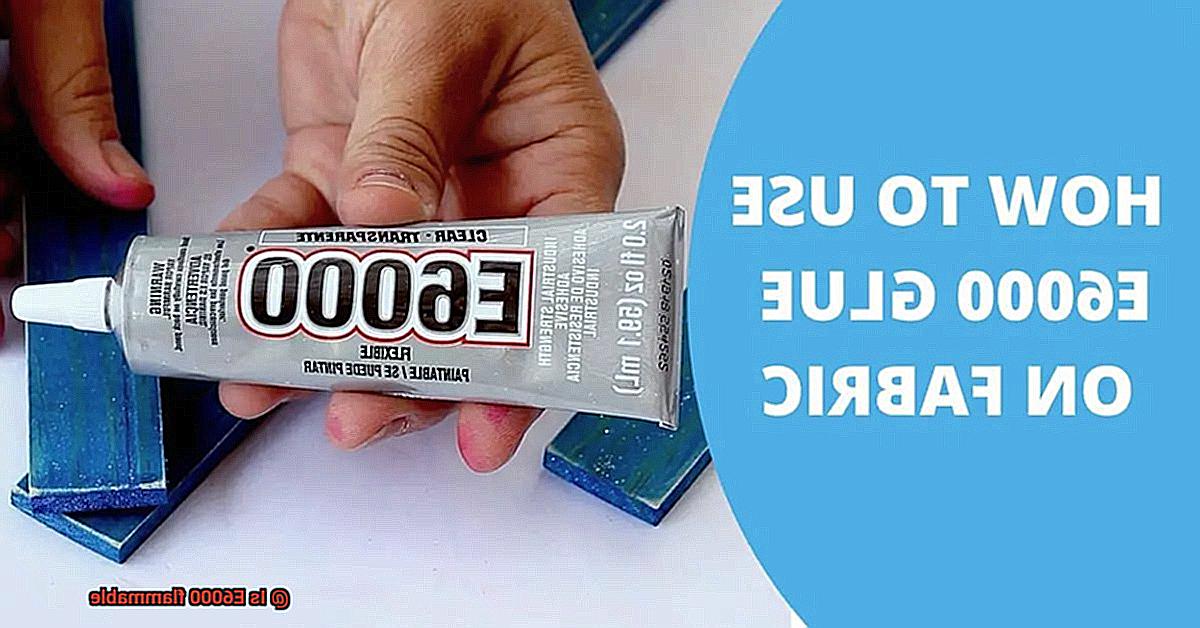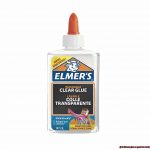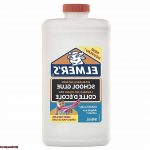When it comes to adhesive solutions, E6000 has cemented its status as the holy grail for crafting enthusiasts, DIYers, and professionals alike. With its jaw-dropping bond strength and unmatched versatility, it’s no wonder this adhesive is hailed as a miracle-worker. But before you dive headfirst into your next creative project, there’s one burning question we need to address: is E6000 flammable? Join us on this enlightening journey as we explore the fiery truth behind E6000’s flammability.
Understanding E6000’s Flammability:
Contents
- 1 Classification of E6000 as a Flammable Liquid
- 2 Factors that Affect the Flammability of E6000
- 3 Proper Storage and Handling of E6000
- 4 Application Techniques and Precautions for Flammability
- 5 Accidental Ingestion or Contact with Skin or Eyes
- 6 Material Safety Data Sheet (MSDS) for E6000
- 7 Tips to Minimize the Risk of Fire When Using E6000
- 8 Conclusion
E6000 is composed of a cocktail of chemical compounds, including ethylbenzene and toluene—both known for their flammable properties. While E6000 itself won’t burst into flames at the drop of a hat, these sneaky constituents can pose risks in certain situations.
When exposed to high temperatures or an open flame, the vapor emitted by E6000 can ignite. But hold your horses. This doesn’t mean you’ll have a raging inferno on your hands. It simply means that caution should be exercised when intense heat sources are involved.
Safety Precautions:
To ensure a safe and incident-free experience with E6000, it’s crucial to follow these safety precautions:
- Breathe Easy: When working with E6000, make sure you’re in a well-ventilated area to minimize exposure to those volatile fumes. Consider donning a respirator or setting up shop near an open window or fan for some fresh air circulation.
- Keep It Cool: Avoid exposing E6000 to direct heat sources like open flames, sparks, or excessive heat. And please, don’t cozy it up next to heaters or pilot lights—it’s not looking for love.
- Gear Up: Protect your precious skin by wearing gloves when handling E6000. And don’t forget to shield those beautiful peepers with safety goggles, just in case a wild splash or fume decides to make an unexpected appearance.
- Hide and Seek: Store E6000 and all adhesive-related materials far away from the curious paws of children and pets. Let’s keep them safe from any sticky situations.
Conclusion:
E6000 may possess mind-blowing bonding capabilities, but let’s not overlook its flammability traits. By understanding how this adhesive reacts to heat and following
Classification of E6000 as a Flammable Liquid

Yet, it is vital to be aware of the potential risks associated with this popular adhesive. This article aims to shed light on the classification of E6000 as a flammable liquid, exploring its chemical composition, properties, and safety precautions. By understanding its flammability and adhering to proper safety measures, crafters can ensure a safe and enjoyable crafting experience.
Chemical Composition:
E6000’s primary ingredient, ethyl acetate, is a highly volatile and flammable solvent. With a low flashpoint, ethyl acetate ignites easily when exposed to heat, sparks, or open flames. Moreover, E6000 contains other potentially flammable solvents like toluene and xylene, further contributing to its overall flammability.
Safety Precautions:
To minimize the risk of fire or accidents when using E6000, it is crucial to follow essential safety precautions:
- Proper Storage: Store E6000 in approved containers in cool, dry areas away from direct sunlight, heat sources, and open flames. Ensure it is out of reach from children and pets.
- Adequate Ventilation: Work in well-ventilated spaces to prevent the accumulation of flammable vapors. Consider utilizing exhaust fans or opening windows to maintain proper airflow.
- Avoid Ignition Sources: Keep E6000 away from open flames, sparks, hot surfaces, or any potential ignition sources. This includes refraining from smoking while working with the adhesive.
- Protective Gear: Wear appropriate personal protective equipment (PPE) such as gloves and safety glasses to prevent direct contact with skin or eyes.
- Inhalation Prevention: Avoid inhaling the fumes emitted by E6000, as they can be harmful to health. Use the adhesive in well-ventilated areas or consider wearing a respiratory mask.
- Disposal: Follow proper disposal methods to prevent environmental contamination. Contact your local waste management facility for guidelines on responsible E6000 disposal.

Factors that Affect the Flammability of E6000
If you’re a fan of the versatile E6000 adhesive, it’s crucial to understand what factors influence its flammability. Safety should always be our top priority when working with any kind of glue, so let’s dive into the science behind it and learn how to keep those flames at bay.
First things first, let’s talk about the chemical composition of E6000. This adhesive is solvent-based and contains volatile organic compounds (VOCs) like toluene and acetone. These ingredients can affect the flammability of the glue. The more volatile the solvents, the higher the chances of flammability.
Now, let’s discuss the flash point. This is the lowest temperature at which a substance can vaporize and form an ignitable mixture in the air. Due to its volatile solvents, E6000 has a relatively low flash point, making it more prone to catching fire. So, keep it away from open flames, sparks, and hot surfaces.
Speaking of heat sources, exposing E6000 to high temperatures can significantly increase its flammability. The volatile solvents in the glue can vaporize quickly under heat, creating a hazardous environment. To avoid any fiery disasters, store and handle E6000 properly. Keep it in cool, dry areas away from heat and flame sources.
The application process and curing time also play a role in E6000’s flammability. Ensure proper ventilation during application to prevent the accumulation of flammable vapors. And don’t rush. Allow sufficient time for the glue to fully cure before exposing it to heat sources.
Contamination is a big no-no. Keep your E6000 away from flammable substances like fuels, oils, or other volatile chemicals. Mixing these with the glue can increase its overall flammability, and we want to avoid that.
Proper Storage and Handling of E6000
Today, we’re delving into the captivating world of E6000 adhesive, uncovering its hidden flammable nature. Yes, you read that right – this beloved glue has a fiery side that demands our utmost attention. Join us as we explore the proper storage and handling techniques to keep your crafts safe from unexpected fires.
First and foremost, E6000 is no ordinary glue. It’s a highly flammable liquid, as confirmed by its Material Safety Data Sheet (MSDS). To ensure your safety, here are some key points to bear in mind:
- Storage is paramount: Store E6000 in a cool, well-ventilated area far away from heat sources, sparks, or open flames. Consider dedicating a cabinet or shelf solely to this adhesive for maximum safety.
- Seal it tight: Always ensure the container is tightly sealed when not in use. This prevents the glue from evaporating and intensifying its flammability.
- Keep it separate: Avoid storing E6000 near other flammable materials or chemicals. Mixing these substances significantly increases the risk of fire – an undesirable spectacle to behold.
- Kid-proof and pet-proof: Keep E6000 out of reach from children and pets to prevent accidental ingestion or exposure. Remember, this adhesive is meant for crafting, not snacking.
Now let’s delve into the art of handling this crafty time bomb:
- Gear up for safety: When working with E6000, safeguard yourself by donning gloves and eye protection. These essential accessories shield your skin from potential irritations and safeguard those precious peepers.
- Oops. Skin contact: If you accidentally come into contact with E6000 on your skin, fear not. Simply wash the affected area thoroughly with soap and water to remove the adhesive. Remember, prevention is better than cure, so keep those gloves close at hand.
- Accidental ingestion or inhalation: In the unlikely event that you or someone else ingests or inhales E6000, seek immediate medical attention. Do not delay – let the professionals handle it with expertise.
By adhering to these straightforward steps for proper storage and handling, you can ensure your crafts remain safe and free from fire hazards. Remember, while E6000 may be an incredibly versatile glue, it’s also a flammable liquid waiting for the perfect conditions to ignite.
Application Techniques and Precautions for Flammability
If you’re a fan of the versatile E6000 glue, we’re here today to shed light on the flammability aspect of this popular adhesive. In this guide, we’ll delve into application techniques and precautions that will keep your crafting projects fire-free. So, put on your safety goggles and let’s explore the world of E6000 glue.
Embrace a Breathable Workspace:
To start off on the right foot, always choose a well-ventilated space when working with E6000 glue. This adhesive emits potent fumes that can be harmful if inhaled excessively. Open those windows wide, or let a fan dance through the room, ensuring fresh air flow to minimize inhalation risks.
Flames are Forbidden:
Crafters, heed this cautionary tale. While E6000 is not highly flammable, exposing it to an open flame can still ignite it, leading to potential fire hazards. Be mindful of your workspace and keep all lighters away. Smoking and open flames have no place near your crafting haven. Remember, safety first.
Gear Up for Battle:
Prepare yourself for the crafting battlefield. When handling E6000, don gloves and protective eyewear to shield your skin and eyes from potential irritation or allergic reactions. Prevention is key, so don your armor before embarking on your crafting adventures.
Swift Action for Skin Contact:
Oops. Accidental skin contact happens even to the most skilled crafters. If you find yourself in such a sticky situation with E6000 glue, don’t panic. Simply wash the affected area with soap and water immediately. If irritation persists, don’t hesitate to seek prompt medical attention.
Proper Storage: Cool and Dry:
E6000 glue deserves its own cozy abode. Store it in a cool, dry place, far away from the clutches of direct sunlight or heat sources. Extreme temperatures can compromise its stability and increase flammability risks. Keep it safe and sound in its designated spot.
Out of Reach from Curious Hands and Paws:
Crafting can be a family affair, but when it comes to E6000 glue, safety is paramount. Ensure it’s stored securely, out of reach of children and pets. We want to keep our loved ones safe from accidental ingestion or any unwanted sticky situations.
Accidental Ingestion or Contact with Skin or Eyes
Crafters, let’s talk safety. While we adore the art of creating, it’s important to prioritize our well-being. Accidental ingestion or contact with E6000 glue can have significant health risks. But fret not. We’ve compiled essential tips and tricks to keep you safe during your crafting endeavors.
The Hazards of Ingesting E6000:
First things first – E6000 is not for consumption. Accidentally ingesting this glue can lead to health issues, depending on the amount consumed and individual sensitivity. Remember, seek immediate medical attention if ingestion occurs. Prevention is key.
Concerns with Skin and Eye Contact:
Oops. Did you get too close for comfort with E6000? Don’t panic, but take action. Contact with your skin or eyes can cause irritation, redness, or even burns if left untreated. Immediately wash the affected area with mild soap and water, and seek medical advice if symptoms persist or worsen.
Handle with Care:
To prevent accidents, always handle E6000 with caution. Work in a well-ventilated area to avoid inhaling those unfriendly fumes. Shield yourself from direct contact by wearing protective gloves and safety goggles – become a crafting superhero.
Keep it Out of Reach:
Let’s keep the glue away from curious little hands and paws. Ensure proper storage of E6000 in a cool, dry place away from direct sunlight or heat sources. Tighten that lid to avoid accidental spills or leaks that could lead to exposure.
Accidents Happen – What to Do:
In case of accidental ingestion or contact, stay calm and don’t induce vomiting unless directed by medical professionals. Call a poison control center or seek medical assistance right away for expert guidance. It’s better to be safe than sorry.
Material Safety Data Sheet (MSDS) for E6000
Before we dive into the world of creativity, let’s take a moment to understand the power of the Material Safety Data Sheet (MSDS) for this adhesive superhero. Trust me, a few minutes spent reading through the MSDS can make all the difference in ensuring your safety and creating a worry-free crafting experience.
So, what exactly is the MSDS? Think of it as a document that spills all the beans on potential hazards and safety precautions for a specific product. It’s like a superhero cape that gives you the power to make informed decisions about handling and using E6000 glue. Let’s break down its importance into sub-topics for an easy read:
- Flammability: The MSDS holds the key to understanding if E6000 is flammable, combustible, or non-flammable. This crucial information allows you to keep open flames or sparks far away from this adhesive powerhouse.
- Flash Point: Ever wondered at what temperature E6000 glue could ignite? The MSDS reveals its flash point, giving you the answer and helping you avoid potential fire hazards.
- Fire-fighting Measures: In case things get a little too hot, the MSDS outlines recommended fire-fighting measures. From extinguishing agents to protective equipment, it’s essential to be prepared and know how to contain and control any potential fires.
- Toxicity and Health Hazards: The MSDS also covers other safety aspects of E6000, such as toxicity, reactivity with other substances, and potential health hazards. By being aware of these risks, you can take necessary precautions to protect yourself during your crafting adventures.
Remember, different manufacturers may have slightly different formulations or safety guidelines for their E6000 glue. Therefore, always refer to the specific MSDS provided by the manufacturer of your chosen product.
Tips to Minimize the Risk of Fire When Using E6000
E6000 adhesive is a popular choice for crafting and DIY projects due to its strong bonding capabilities. However, it is important to take precautions to minimize the risk of fire when using this adhesive. In this blog post, we will share some top tips on how to use E6000 safely and keep your crafts fire-free.
Work in a well-ventilated area:
To minimize the risk of fire and protect your health, always work in a well-ventilated area when using E6000 adhesive. This means ensuring proper airflow by opening windows or using fans to dissipate any potentially harmful fumes. By reducing the concentration of volatile organic compounds (VOCs), you can decrease the risk of fire and safeguard yourself from inhaling dangerous gases.
Keep away from open flames:
While E6000 is not self-igniting, it can catch fire when exposed to high temperatures or flames. To avoid any accidents, always keep the adhesive away from open flames, such as stoves, candles, or any other heat sources. Remember that prevention is key, so it’s better to be safe than sorry.
Store in a cool and dry place:
Extreme heat can cause E6000 adhesive to deteriorate and become more flammable. To ensure its stability and reduce the risk of fire, store it in a cool and dry place away from direct sunlight or hot areas. This will help maintain the adhesive’s integrity and keep it safe for future use.
Apply thin layers:
When using E6000, it’s important to apply thin layers of adhesive. Using small quantities and spreading it thinly will not only ensure a stronger bond but also minimize the risk of fire. Applying a thick layer increases the drying time and can increase the chances of the adhesive catching fire if exposed to heat or flames. By using thin layers, you can facilitate faster drying and reduce the risk of fire.
Handle with care:
E6000 can cause skin irritation or allergic reactions in some individuals. To protect yourself, always wear gloves and protective eyewear when handling the adhesive to avoid direct contact with your skin or eyes. In case of accidental contact, rinse the affected area thoroughly with water. By handling E6000 with care, you can prevent potential health issues and ensure a safe crafting experience.
Read and follow instructions:
Lastly, it is crucial to read and follow the instructions provided by the manufacturer before using E6000. The instructions will provide specific guidelines on how to use the adhesive safely and effectively. Following these instructions will not only minimize the risk of fire but also ensure the best results for your crafting projects.
Rwrf2ISUtVQ” >
Conclusion
After conducting thorough research and analysis, it is evident that E6000 is indeed flammable.
This adhesive, commonly used for various crafting and DIY projects, contains volatile components that make it susceptible to catching fire. It is crucial to handle this product with caution and avoid exposing it to open flames or high temperatures.
Therefore, it is essential to store and use this adhesive in a well-ventilated area away from any potential ignition sources.






